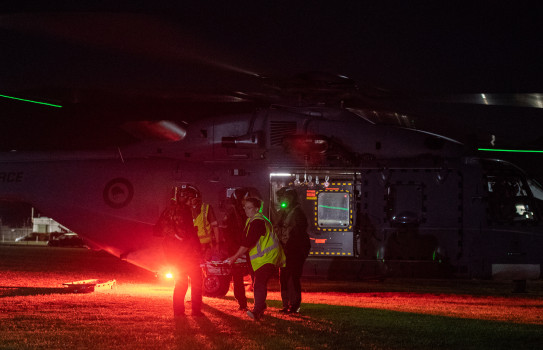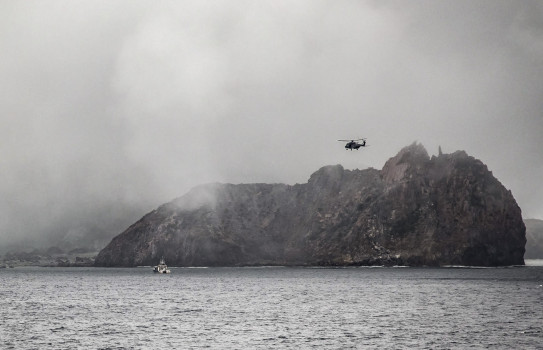RNZAF carries out rare Antarctica mid-winter medical evacuation flight
27 June 2024
Unfortunately you are viewing this website on an outdated browser which does not support the necessary features for us to provide an adequate experience. Please switch to a modern browser such as latest version of Google Chrome, Mozilla Firefox, Apple Safari or Microsoft Edge.
Ngā mihi nui
Whakaari / White Island
At 2.11pm, Monday, 9 December 2019, Whakaari/White Island erupts. At the time of the eruption, there are 47 people on the island. Tourists and tour guides are caught up in the explosive event.
9 December 2019
Within minutes, our personnel at the New Zealand Defence Force’s Headquarters Joint Forces New Zealand (HQJFNZ) gather to build a picture of the problem and determine what assets and personnel can be deployed to support the recovery effort.
Reports are coming in around the number of people killed or seriously injured. A Royal New Zealand Air Force P-3K2 Orion aircraft and crew is diverted from a task surveying flooding on the West Coast of the South Island to turn and fly north to carry out surveillance and reconnaissance over Whakaari/White Island to gather imagery and information.
Within hours of the eruption, two NH90 helicopters with a dedicated team of aeromedical evacuation specialists on board fly from Ōhakea to Whakatāne.
Patients are being transported to burns units in hospitals around the country. The aircraft sits on the ground with engines running, waiting for critically injured people to be stabilised, and in some cases decontaminated, before being loaded aboard the waiting NH90s for the 400 kilometre, 1 hour 40 minute flight down to Wellington. Just after midnight, the NH90s land at Trentham Military Camp carrying four seriously injured patients.

10 December 2019
Imagery from the P-3K2 Orion surveillance flight arrives in the early hours of the day and the team at 230 (Mission Support) Squadron, RNZAF and later the Joint Intelligence Fusion Centre (JIFC) analyse the images, determining the likely locations of up to eight victims that remain on the island.
13 DECEMBER 2019
The Explosive Ordnance Disposal (EOD) Squadron recovery team go ashore and locate the bodies of the victims, and when their work is complete the NH90s move in, taking two trips to move the victims onto the waiting ship HMNZS Wellington. Back on the island, the recovery team spends the remainder of their limited time searching for another two missing since the eruption - regrettably to no avail.
Despite all of the risks and challenges, the Air Force and other Defence Force personnel and capabilities involved are able to overcome those issues, making a difference to alleviate the suffering of victims, their families and friends.

A Royal New Zealand Air Force NH90 helicopter in the air near the Whaakari/White Island.
Two Seasprite helicopters begin the process of moving the victims, one at a time, back to Whakatāne airport. Finally the victims are reunited with their families and after some shared grieving, the bodies are loaded into two NH90 helicopters to be moved to Auckland where the Disaster Victim Identification (DVI) teams go to work.
The risks were very real. One of the go/no-go criteria for recovery was that there needed to be a 6 percent or less chance of death at the task site if an eruption were to occur in a three-hour window.
At the time, GNS were saying there was a 40-60 percent chance of another eruption in a 24-hour period.
Despite all of the risks and challenges, the Air Force and other Defence Force personnel and capabilities involved are able to overcome those issues, making a difference to alleviate the suffering of victims, their families and friends.
A big part of our work in the Air Force involves assisting communities affected by conflict or natural disasters. The fact that we work to protect and help people is one very good reason why we're so passionate about what we do. It gives our lives real meaning and purpose.
Find out moreOur other areas of work